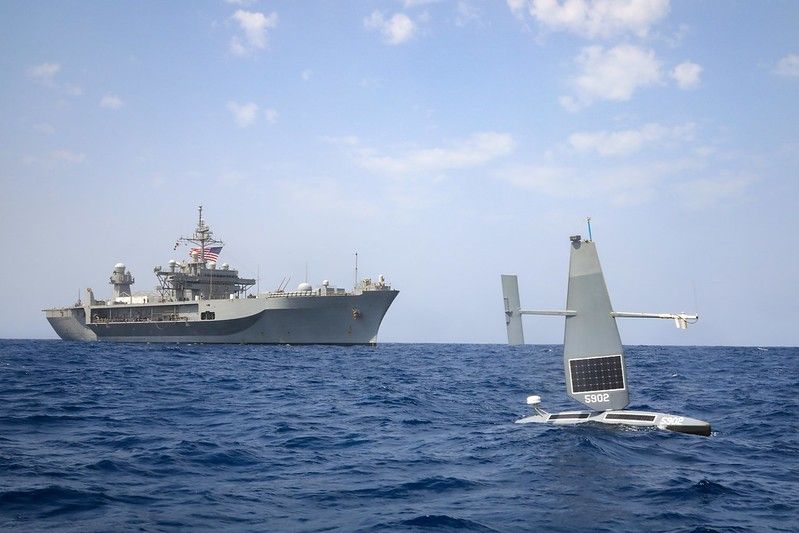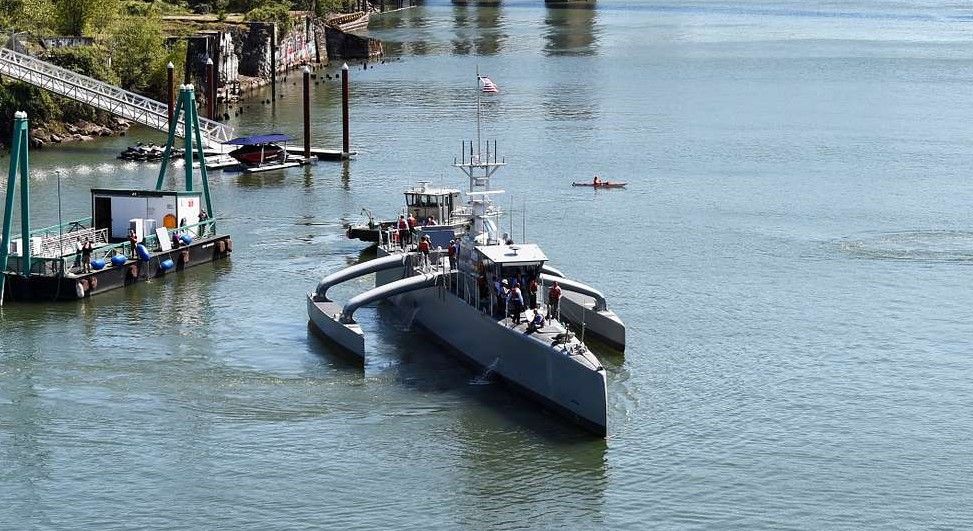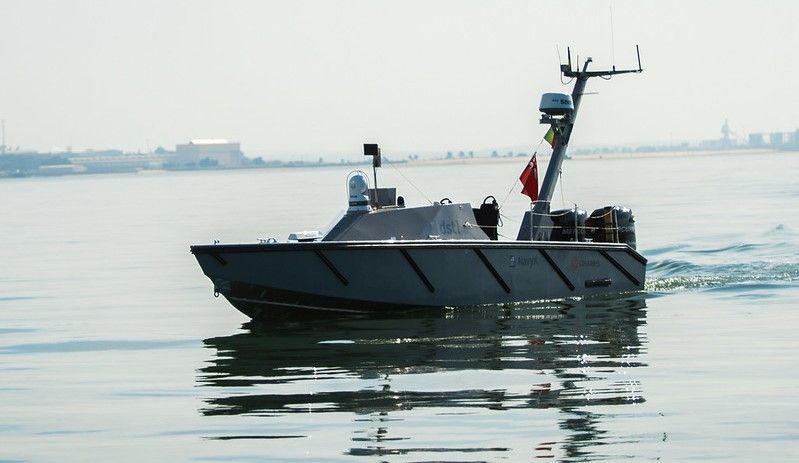Beyond Reconnaissance: Navy Plans for Future Surface Drones
Military chiefs outline their vision for expanding USV use at sea.

At its earliest creation, drones were used for reconnaissance. Over the years, as their power, payload capability, and performance has grown, so too has their versatility.
Today, most notably in Ukraine, drones are an essential tool for not only surveillance of enemy troop movements, but also for artillery spotting, for tank busting, for attacks on enemy power plants, depots, and oil refineries, for destroying enemy defensive positions, and for counter-drone operations.
Even at sea, airborne and surface drones have been successful in attacking ships and port facilities - most famously in sinking the Russian cruiser Moskva.

This expanding influence of drones at sea has caused military chiefs around the world to question what roles surface drones should be playing in their navies.
As the industry journal Defense News states, the plan is to go “… beyond surveillance and instead incorporate that information-gathering capability into the detect-identify-track-engage kill chain.”
At present, for example, the US Navy is testing and has deployed basic unmanned systems — or as Rear Adm. Kevin Smith describes it “minimum viable product.” From this, the Navy hopes to gain experience and feedback from sailors and operators to find out how best to proceed to the next stage. The goal, according to Smith is “to get beyond surveillance” and start using drones at sea with a more destructive purpose.
“We’re putting unmanned vessels in the hands of operators, and so we see what the challenges are, being at sea for six, eight, nine months now with some of the unmanned surface vessels,” explains Smith. “It really has challenged us.”
It is a stance supported by Adm. Lisa Franchetti, when she said, “I’m confident that the future of our Navy is going to be a mix of conventionally manned platforms with unmanned and autonomous platforms all teamed together, so these are all the building blocks that we need to take right now to be able to get there.”

This is giving drone designers and manufacturers food for thought and has them asking how should surface drones integrate with conventional forces.
“The most important thing, is to cohere [lessons from experimentation] together into a concept of operations that can apply broadly across our Navy,” says Franchetti. “But right now, I really like the fleets having this creative spirit unleashed and being able to get all their ideas out there, so then we can think about how would we elevate that into a concept of operations that we can train to, that we can resource to and that we can continue to use.”

The British Royal Navy is making similar technological advances towards expanding the use of drones in their fleets with testing being conducted with airborne, surface, and underwater uncrewed vehicles.
In September 2023, for example, a W Autonomous Systems (WAS) drone transporting supplies landed and then took off from the deck of the aircraft carrier HMS Prince of Wales.
While this achievement may be just a small step towards integrated operations, it was a first for the Royal Navy, with a press release explaining how, “The goal is to deploy drones with a UK Carrier Strike Group in the future, using them to transfer stores and supplies – such as mail or spare parts – between ships, without the need to launch helicopters.”
At the same time, another uncrewed vessel (Royal Navy Motor Boat Harrier) has been operational in the Persian Gulf for more than a year conducting mine sweeping operations. It is a ship with the ability to function autonomously (using a pre-programmed mission) or from a remote-control centre to detect explosives on the seabed from a side-scan sonar. It can also notify troops on land or at sea of her whereabouts.

“What we are seeking to achieve,” explained Commander Peter Pipkin, Surface Combatant Combat Systems Desk Officer and Fleet Robotics Officer, “is an event that re-shapes the market to provide new opportunities for everybody, and capability transformation for the Navy.”
Over time, uncrewed vessels will become increasingly sophisticated and versatile, capable of performing a wide range of tasks such as reconnaissance, surveillance, mine detection, and even offensive operations.
This is primarily because of their ability to operate in dangerous or hard-to-reach areas without putting human lives at risk. This allows for more effective and efficient missions, as well as the ability to gather valuable intelligence in real-time by providing additional eyes and ears on the battlefield.
Furthermore, the addition of artificial intelligence and advanced sensor technologies will further enhance surface drone capabilities, allowing them to autonomously navigate and make decisions in complex environments – even if far from a friendly fleet.
The expanding role of surface drones in military naval fleets is testament to the ever-evolving nature of warfare and the importance of staying ahead of the curve in terms of technology and innovation.
Learn more about this topic by reading: Counter-Drone Capability Heads to Sea or Car Construction Model Inspires Drone Design
Photo credit: Wikimedia, Flickr, Picryl, Renopenrose, & Flickr

